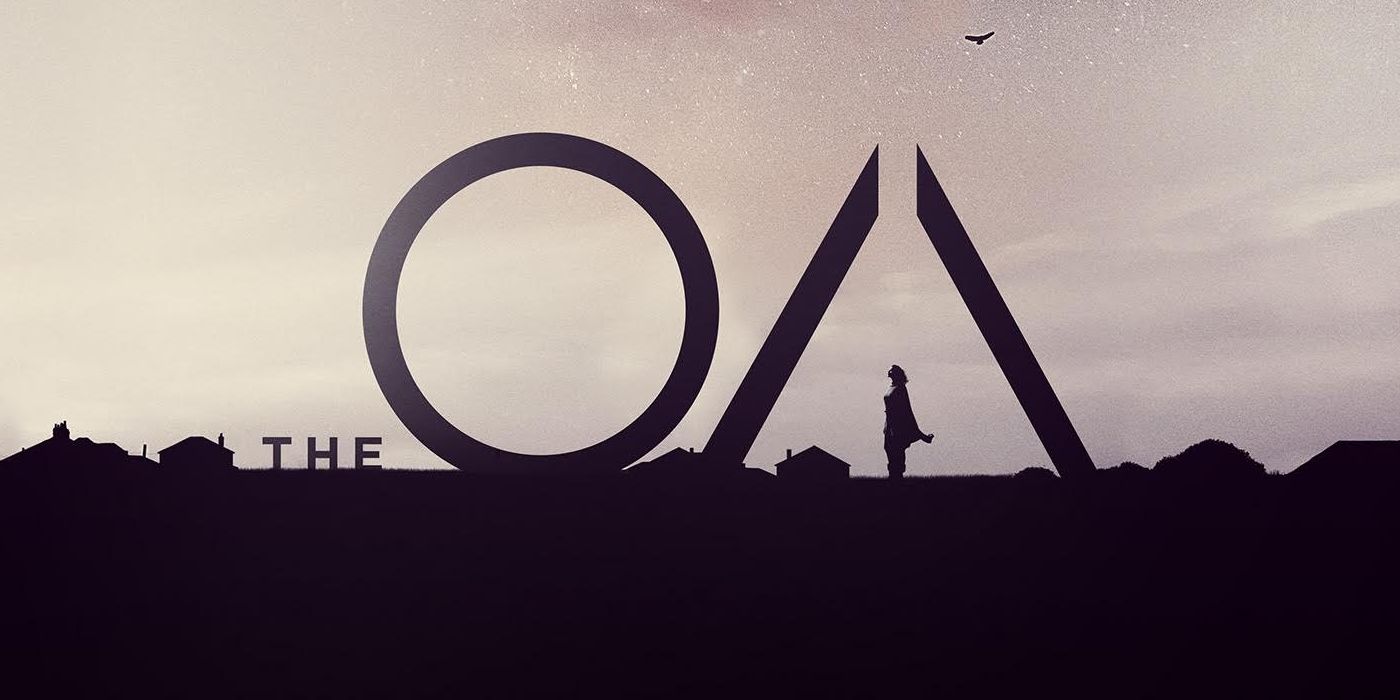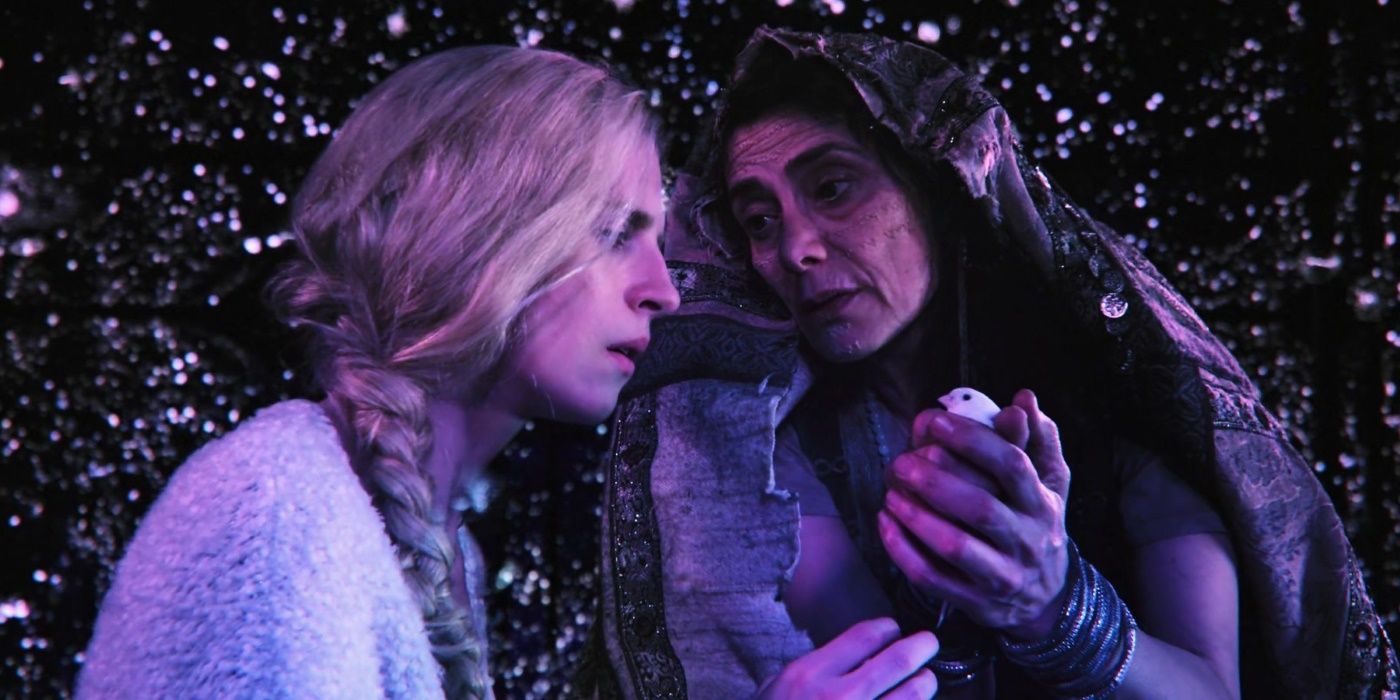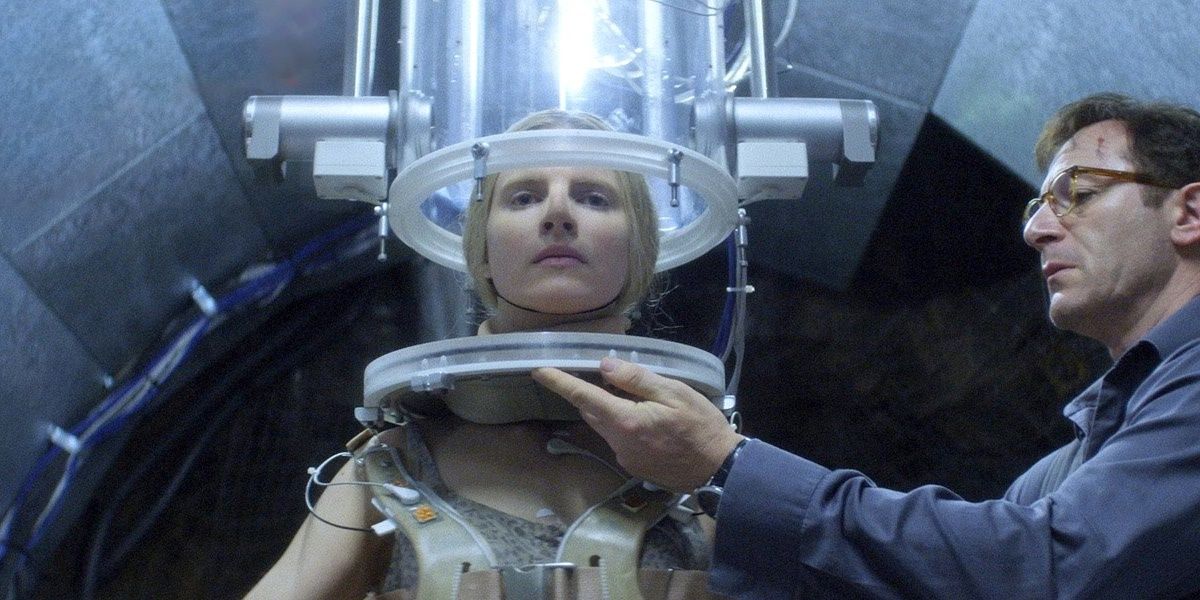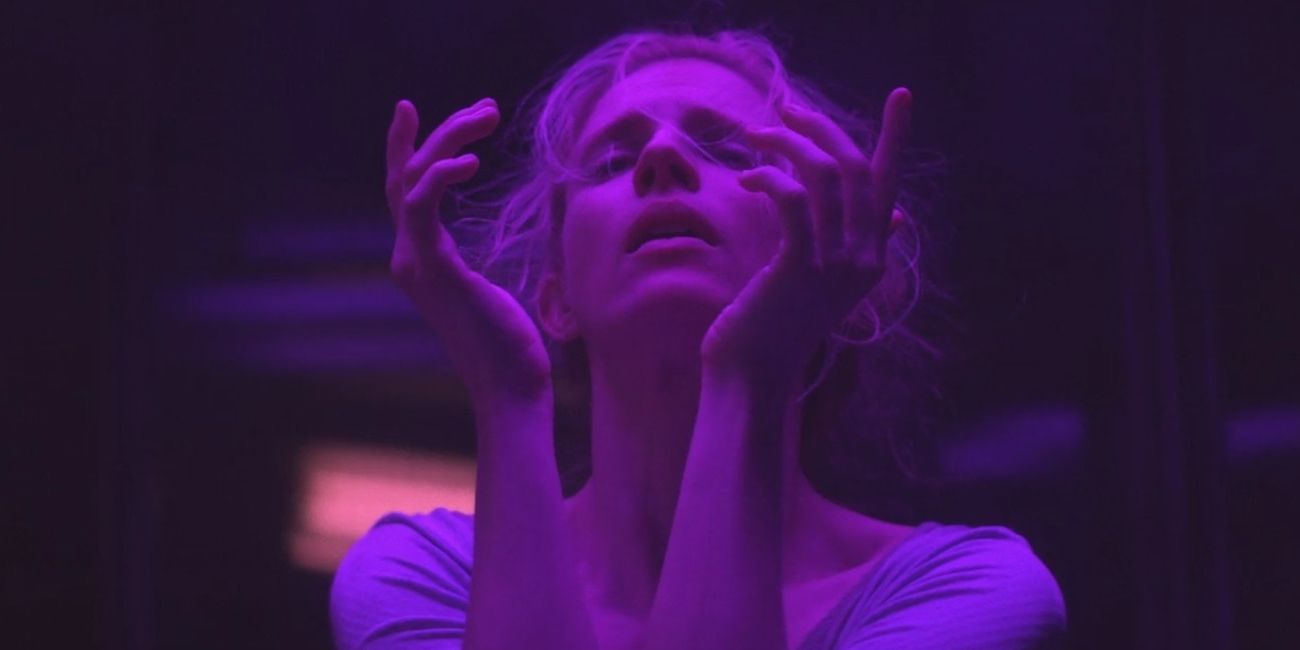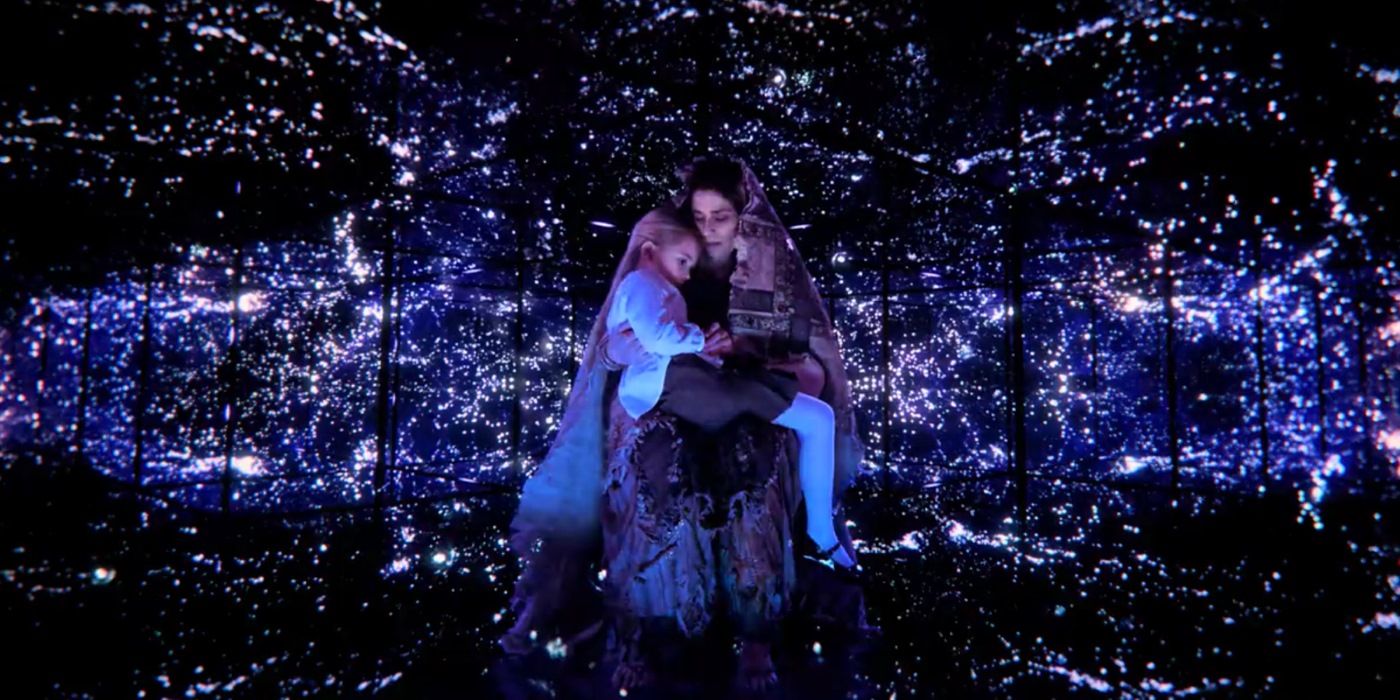WARNING: The following article contains SPOILERS for The OA.
-
It came from out of nowhere, and before Netflix power users even knew what it was, The OA had made its mark, sparking online discussion, theorizing, and yes, outrage. Enigmatic from beginning to end, and completely re-defining what it means to have a 'cliffhanger' ending in the modern world of science fiction storytelling, the tale of a mysterious girl, with a mysterious past, teaching mysterious powers intoxicated as many as it confused to exhaustion. That confusion began in the show's very first episode, when the protagonist revealed her brand new name: 'The OA.'
Having been lost to the world and assumed kidnapped under the name of 'Prairie Johnson' - and later revealed to have been born as 'Nina' - returning a decade later didn't play out as anyone would expect. Instead of answers, the show dove headlong into obscure terminology and surreal blending of the real and supernatural (and we mean supernatural) world. And the first question audiences found themselves asking was: What does The OA even stand for? Thankfully, that question was answered... sort of. Well, there's the answer the show claims to offer - but there are plenty more theories for those ready to open their minds.
We'll start off with the actual explanation offered in the course of the show, before diving into our own theories on the alternative imagery and messages the letters sparked - including one that sets the entire show in a twisted, tragic light.
The 'Original Angel'
The explanation that's offered in the show is both the simplest, and the most ambiguous, in its own way. Eventually, Prairie/Nina explains that the name of 'The OA' is the acronym that one would first expect - standing for 'The Original Angel.' It's one more concrete step that that story takes in the supernatural, the Biblical, and the divine in one way or another. It's just one interpretation of the moniker, though - and Prairie isn't exactly reliable - and implies, if taken to its larger, more speculative conclusion, a unique understanding of the traditional concepts of life, death, afterlife, and divine beings referred to as angels.
The 'Original' part of the name can be taken literally, since Prairie is the first of Hap's test subjects to return to the living world with some unique knowledge from 'the other side' (wherever the starry home of Khatun may actually be). But applying the 'Angel' part to that story, a new definition is offered for the messengers/harbingers/enforcers of the divine written about throughout human culture and religion. These angels aren't winged (exactly), but they travel from one realm to the next, gain the power to "see" the divine plan before it comes to pass, and even acquire the gift of healing.
It's far too ambiguous a show to pin down any further, but it's worth wondering how an outside observer who had never heard of the mythology behind angels would interpret this story, if taken as absolute truth. It's here where the show's constant Biblical imagery is put to best use, too: the machine that grants the prisoners "access" to the higher realm appears as a halo over their heads, they resurrect a fellow divine being (Scott) who clearly resembles Jesus, the serpent imagery and seduction surrounding Hap... the list goes on and on.
But taken from a removed view, the story as told would tell of beings who move from the world of everyday humans to that of divine existence and truth, seek to protect the people around them from harm, heal, and in the case of Prairie in the show's finale, eventually long to return 'home.' Since Prairie was the one to get the ball rolling among the rest of her angel allies, then the 'Original' is self-explanatory. Whether it's rooted in divine truth or some willful ignorance and imagination... that's up to the viewer to decide. And while it's the explanation for 'The OA' name the show puts forward, it's not the only one you can come up with.
The Omega & The Alpha?
Since we only have the two letters to examine for alternative meanings, it's worthwhile to reverse the order, and see if anything jumps out. And if you give the letters "A" and "O" to a Judeo-Christian reader or viewer and ask what comes to mind, the "Alpha" and "Omega" come to mind instantly. Literally, they're the first and last letters of the Greek Alphabet. Biblically, they're the name given to Jesus (or God, depending on which teaching you believe) in the Book of Revelation - intended to express that God is "the beginning and the end," continuous, endless, and complete.
The letters are used in Christian imagery and artwork throughout the world, but the idea itself is shown in both rabbinic and Islamic teachings: the divine Creator is first, last, and everything in between. So what does this examination add to The OA when the letters are reverse? Well, the Alpha/Beginning leading through to the Omega/Ending gives a pretty direct interpretation of life, and death... in that order. By reversing the letters, the nature of the relationship and progress changes: with the Omega before the Alpha, you could argue Prairie has come to see the ending - death - as the true beginning of a greater experience. One that she has returned from bearing that message as her new name.
That ascension, or higher understanding is possibly alluded to in the use of the color purple throughout the series - a color traditionally used to denote royalty, or a sacred nature. In world history, that may be due to the difficulty in actually attaining or dyeing with the color. But Prairie's journey is swimming in the color, suggesting that she has attained something above, be it a purpose, understanding, or vision of true death and rebirth. It's not easy to actually stick to both of these theories at once, since they're communicating different ideas when you get into the details. But with so much religious imagery and cycles of death and rebirth, it's worth considering, since the show gives more than enough evidence to make it an intriguing one, if not a confirmed one.
D.O.A.?
Now, for the grimmest of possible theories behind the name. Although Prairie explicitly reveals her name to be 'The OA,' there is the additional statement that her new name sounds like 'The OA.' The idea of it also being "Away" is offered, but if you take the name on a purely auditory level, then "The-O-A" perfectly rhymes with "D.O.A." - Dead On Arrival. No extra effort needed to look below the surface on that one, given just how many times Prairie/Nina actually dies in the course of the series. As a child, she even flies off of a bridge in a school bus and - take notes now - drowns.
It's likely that most audience members will actually witness that bus scene assuming that the young Nina is experiencing death, and that her run-in with Khatun is equally likely to be a valid, supernatural trip into the divine realm, as it is the imagination of a dying young mind. It's a dark interpretation to assume that the whole story is conjured up in Nina's mind to escape the real suffering of such a death (a classic Jacob's Ladder scenario). Leaping farther ahead in time, it could also be the imagination of an adult Prairie running wild, having drowned after escaping from whatever prison she was held in for seven years.
Fans are free to fill in the details of just when or how Nina/Prairie may have died, been placed in an induced coma, or simply overheard the doctors referring to her as a "D.O.A." before her neurons start firing... or believe one of the slightly more optimistic theories listed above. Or even better, the name may have been a verbal premonition delivered to Prairie, with her death in hospital (and the overheard "D.O.A."" coming after the school shooting she helped stop. Take your pick, but don't expect these questions to be answered any time soon.
NEXT: The OA's Mysterious Ending Explained
The OA is available on Netflix.

